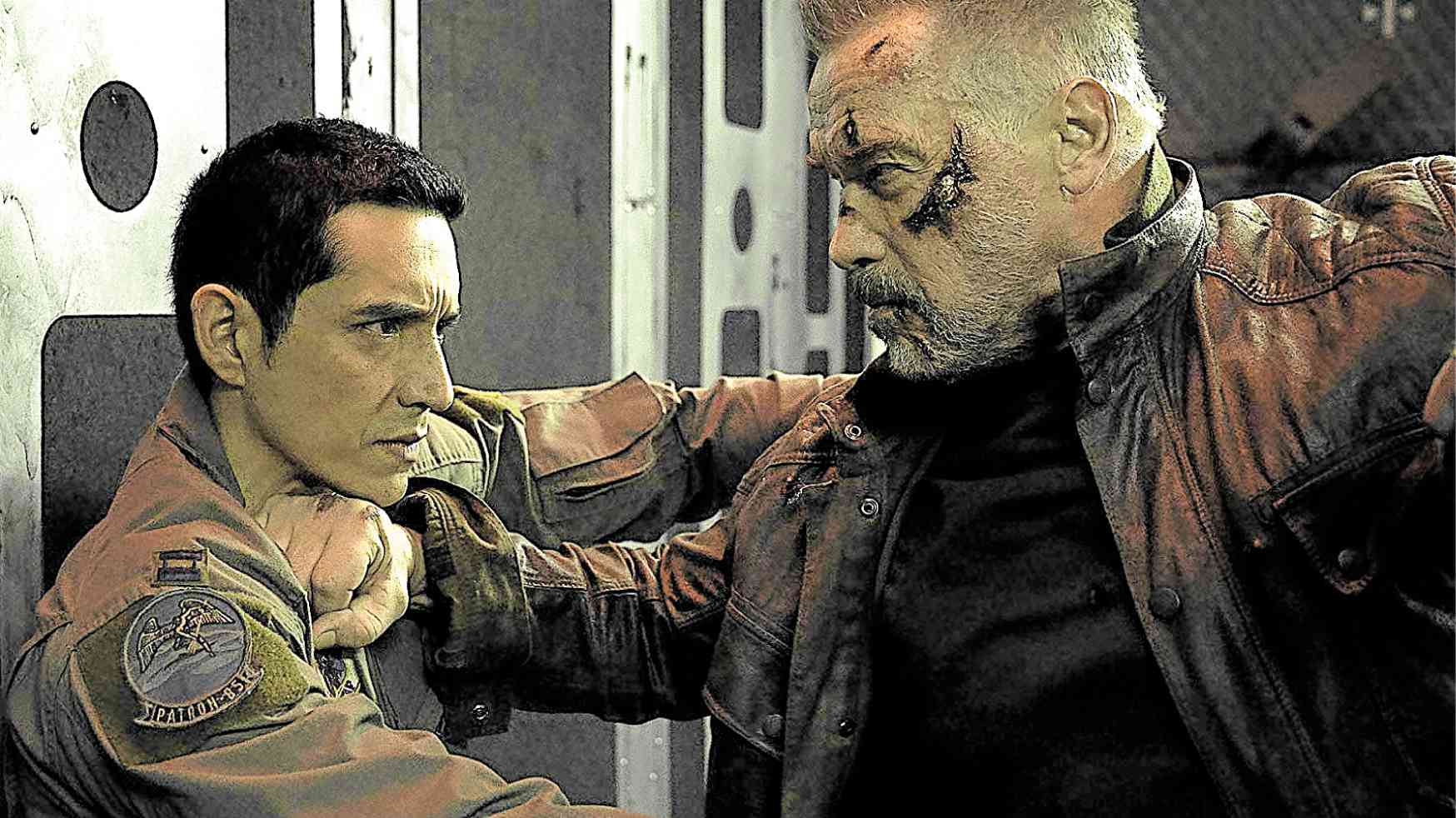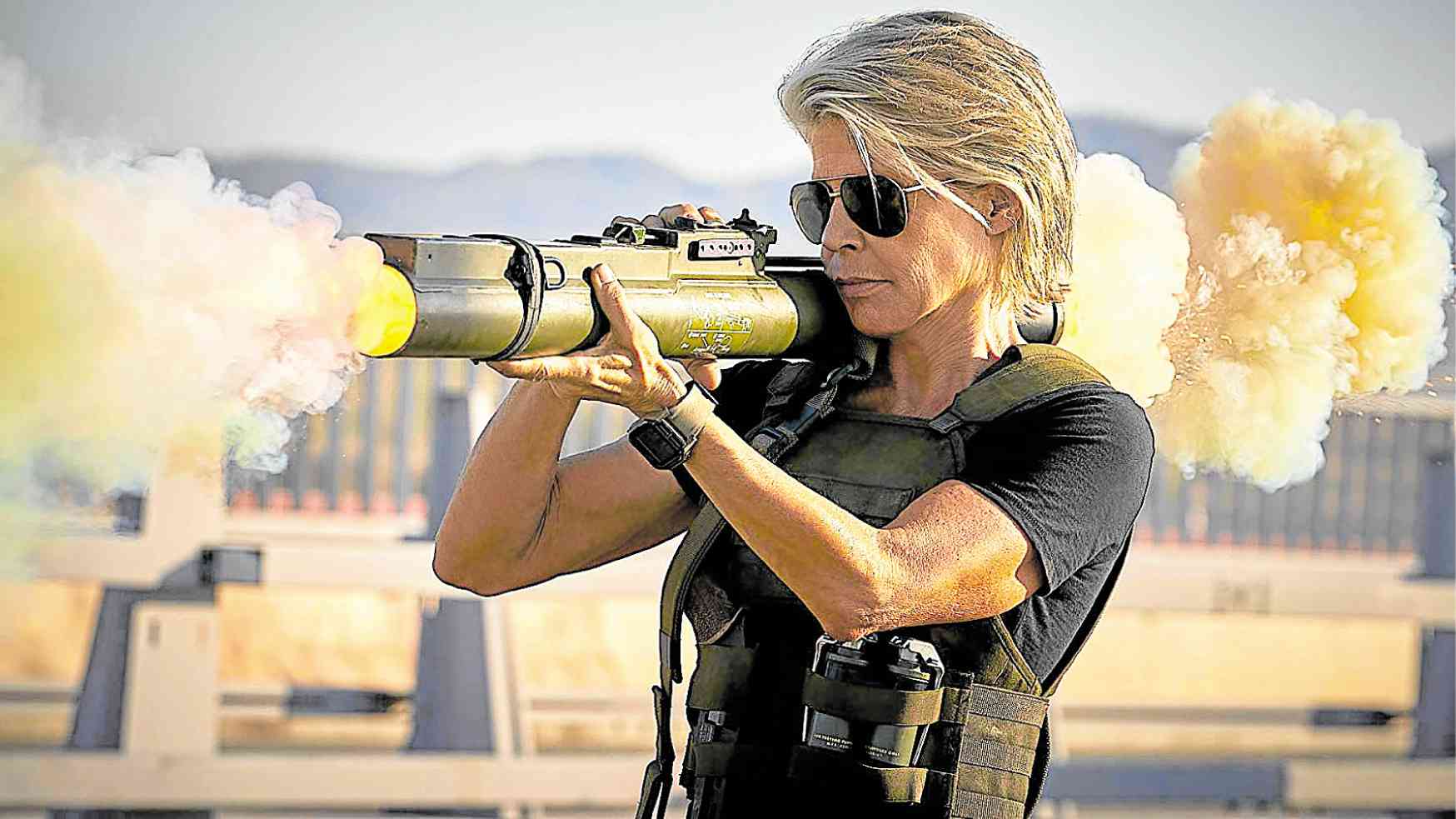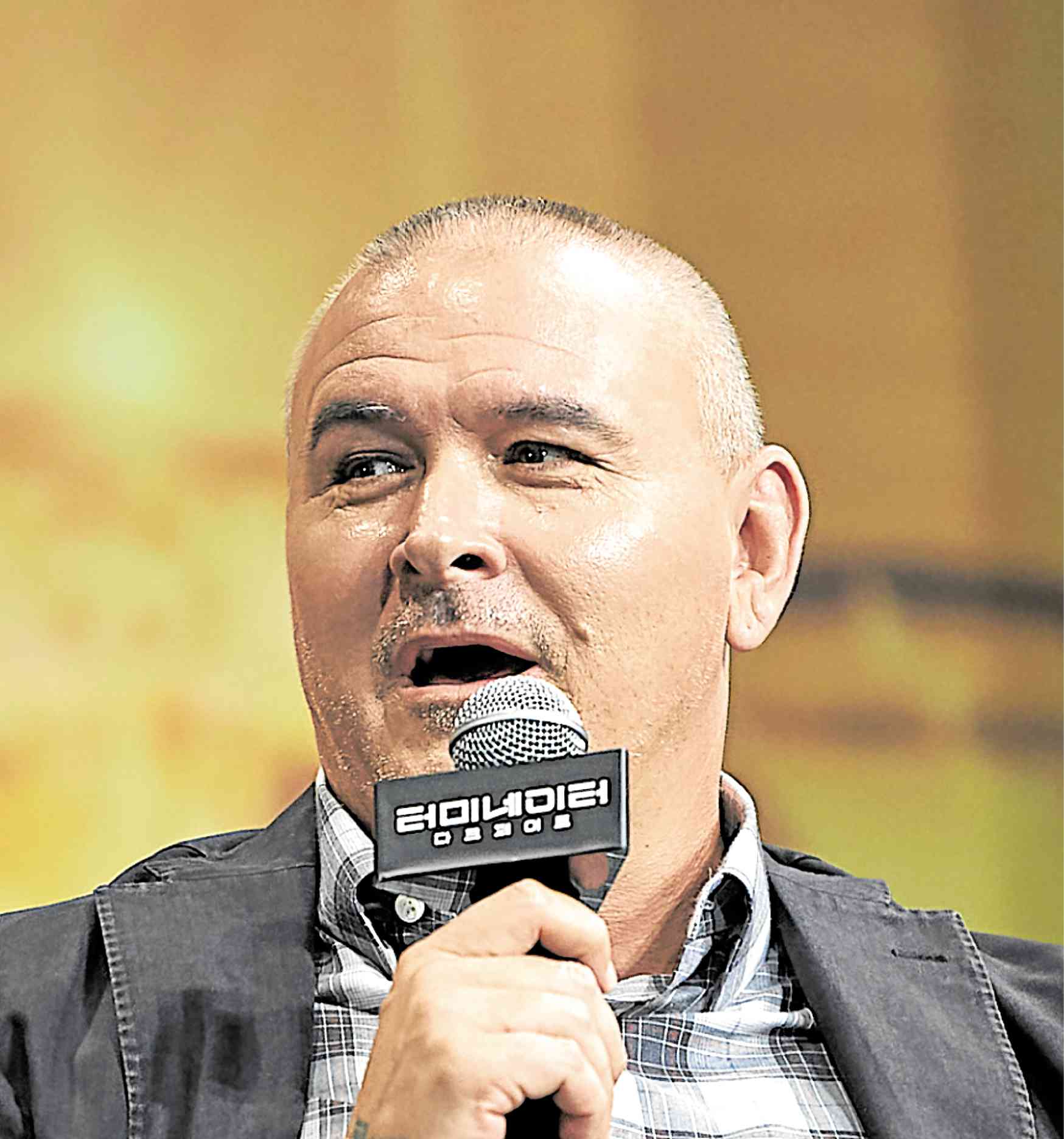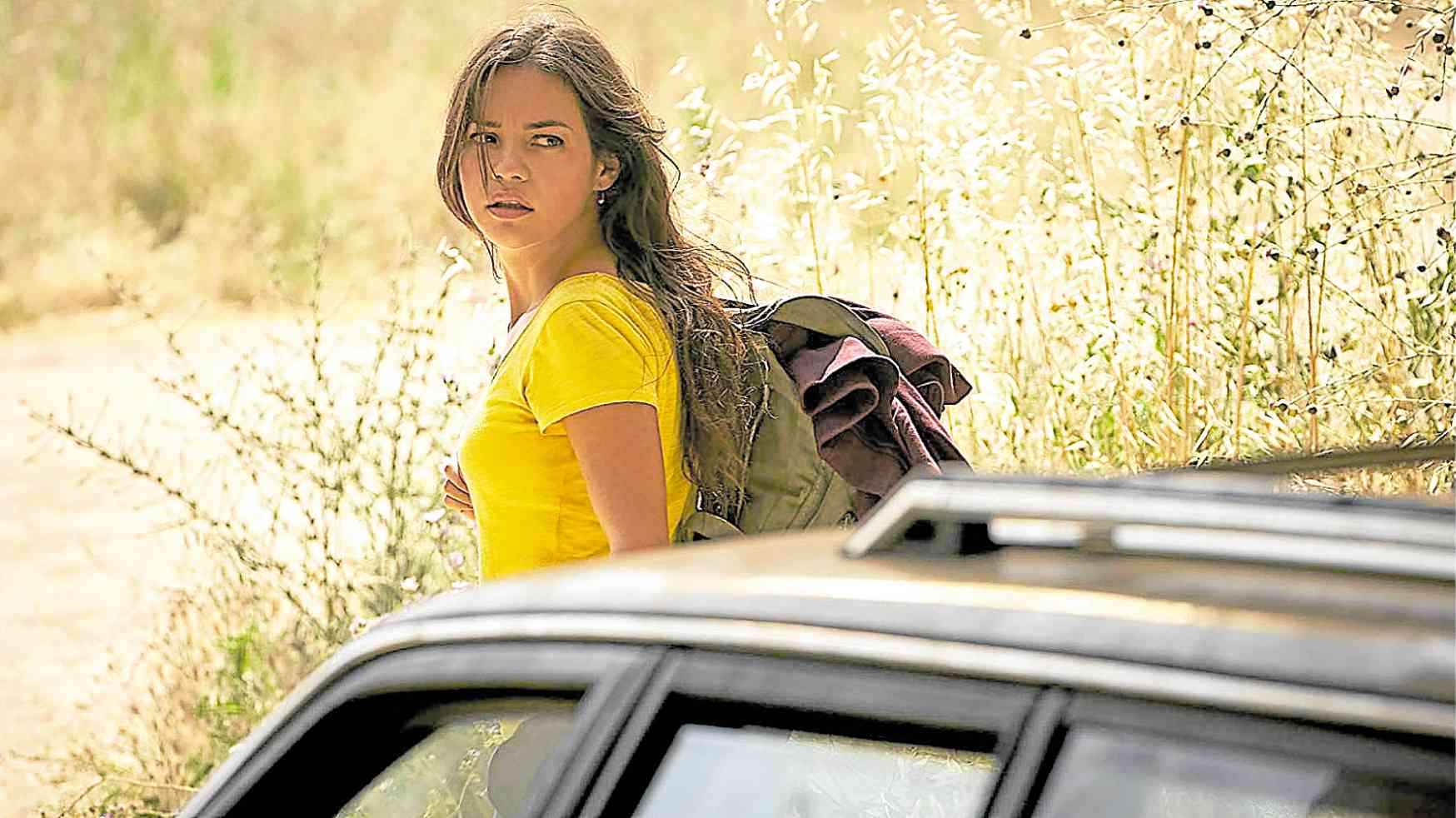‘Terminator: Dark Fate’: Women rule the roost in sci-fi franchise’s thrilling return to form

Gabriel Luna (left) and Arnold Schwarzenegger in “Terminator: Dark Fate” —PHOTOS BY 20TH CENTURY FOX
James Cameron did not set out to make a feminist statement by casting Linda Hamilton as a female action star in “The Terminator,” which was released 35 years before Tim Miller’s latest iteration of the sci-fi series, “Terminator Dark Fate.”
When we spoke to Miller in Seoul last week during the film’s splashy Asian premiere, he told Inquirer Entertainment that the movie is “not about big messages.” “It’s just about having a good time at the theater,” he stressed.
It’s this lack of pretension that drives the series’ cautionary message across. It doesn’t hurt that three fabulous women—Linda, Mackenzie Davis and Natalia Reyes, with some help from Arnold Schwarzenegger, of course—get to do much of the heavy-lifting to foil an invincible robotic nemesis.
Truth is, our expectations were not that high when we sat to watch “Dark Fate” beside the other members of the Philippine contingent, which included our friend Ricky Lo of Philippine Star, popular vlogger and “Pinoy Big Brother” alumnus Wil Dasovich, content creator Jako de Leon, ABS-CBN’s MJ Felipe, Spot.ph’s Clara Rosales and Disney Philippines’ Pam Mariano.

Linda Hamilton
Indeed, it’s easy to disregard a movie’s thematic pertinence after it cleans up at the tills and, thereafter, transmogrifies into a revenue-generating six-title movie franchise.
But there’s good reason why “The Terminator” and and its sequel “Terminator: Judgment Day” continue to strike a chord with critics and film buffs alike.
Last Oct. 20, we were ready to see just another noisy rehash when we watched Tim Miller’s iteration of Cameron’s cautionary film about robots and humans slugging it out to change the course of history.
To our surprise, we didn’t “just have a good time at the theater,” as was Miller’s predominant objective.

Director Tim Miller
Even as he perfunctorily brings out the big guns, the director of “Deadpool” never runs out of inventive ways to incorporate his pop culture-referencing sense of humor as he justifies “Dark Fate’s” reason for being.
In its seamless merging of elements, the film mulls over its intimations of mortality with as much humanity as technical proficiency. It even tackles border politics as it plays out a portion of the plot that sees the Rev-9 in hot pursuit of Linda and company in the US-Mexico border.
Even better, it muses about nature versus nurture in the continuing evolution of 72-year-old Arnold Schwarzenegger’s “outdated” T-800 robot aka Carl, who now has a doting wife, Alicia, and a loving stepson, Mateo.
Carl’s interaction with humans has enabled him to somehow “grow a conscience”—that’s nature vs nature right there, as we mentioned earlier—which has led him to do something that would be considered a spoiler if we discussed it in this article.
But as the T-800 admits, “My past has caught up with me. I won’t be back.”
The movie astutely explains how Carl manages to veer away from his programming, wins his “autonomy,” and integrates himself into human society.

Natalia Reyes
Yes, the “predator vs prey” premise is derivative—after all, how many these stories can we keep regurgitating for the sake of profit? But like Carl, “Dark Fate” deftly validates its existence. It is as thrilling as it is tonally provocative.
In the film, we see a cybernetically enhanced soldier, Grace (Mackenzie Davis), being sent back in time from the year 2042 to protect Dani Ramos (Natalia Reyes) from a deadly Rev-9 assassin (Gabriel Luna)—an unstoppable Terminator prototype possessing a metal endoskeleton and a liquid metal skin that can split into two separate entities. Whoa.
What makes the Rev-9 even more formidable is an artificial intelligence that allows the machine to simulate human emotions when needed.
But the Rev-9 has his work cut out for it when the vengeful Sarah Connor (Linda Hamilton), who has made it her mission to hunt down Terminators for a living, grudgingly teams up with her aging former archenemy, the T-800 (Arnold Schwarzenegger), to protect Dani at all cost!
In “Judgment Day,” three billion lives were saved from the genocidal mission of the T-1000 (Robert Patrick)—but “Dark Fate,” a direct sequel of the first two “Terminator” films that takes place 27 years later, introduces a new threat that could derail John Connor’s revolutionary movement against Skynet.

Mackenzie Davis
While Miller acknowledged the downside of technology, he said he was a little more optimistic about the future of artificial intelligence and robotics.
“We had an artificial intelligence expert come in and talk to us about the concern [about robots replacing humans],” the director recalled. “And I thought, maybe that isn’t a bad thing, especially if it could be done in a humane way. Sometimes, we’re so busy [that we forget to interact with each other]. What if where we’re going is a place that allows us to recapture some of that freedom?
“I don’t think anybody is served well by working at a job that he or she hates doing for 10 hours a day. If technology can alleviate some of those things, then I’m all for it—it’s just a question of how.”
Asked about the predominance of women in a male-dominated genre, Miller said, “I always saw the ‘Terminator’ franchise as a woman’s story—I mean, it was always about Linda Hamilton’s character, about a mother fighting for her son. There was no other way to interpret that story.
“As a man, I would not presume to understand gender politics or a woman’s perspective on things. Luckily, I had three actresses who I constantly consulted about what to do or the proper way of showing something—which worked in our film’s favor.”